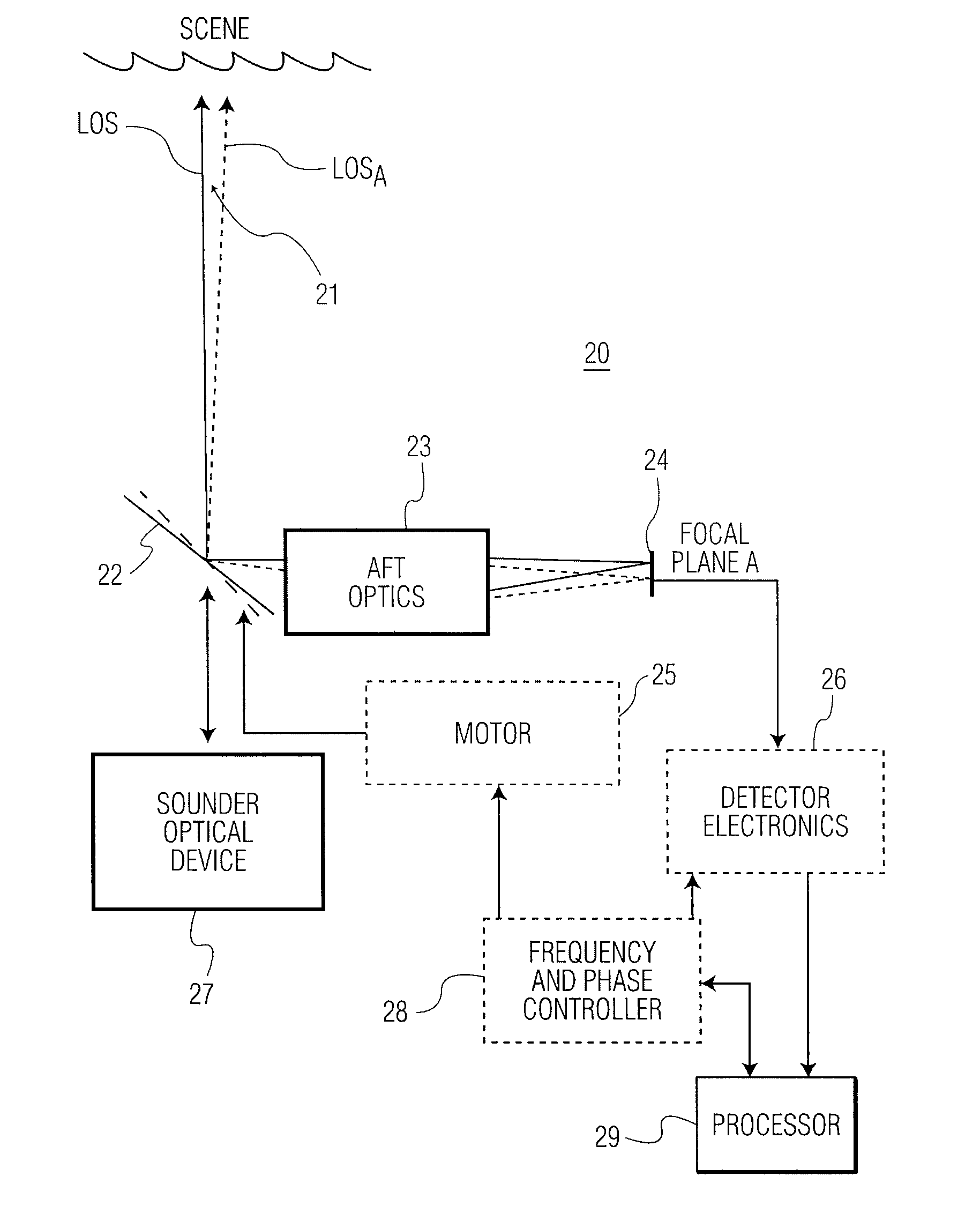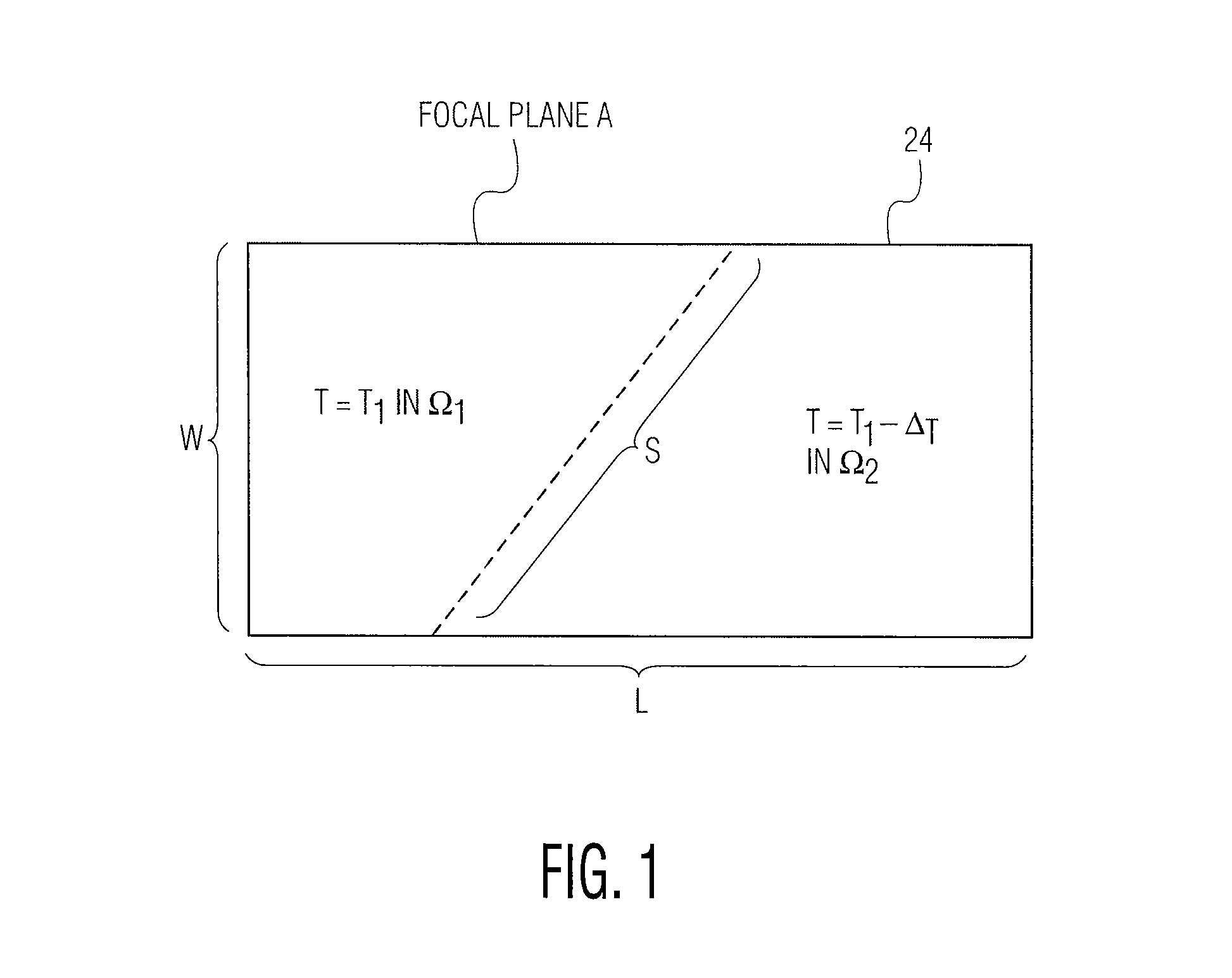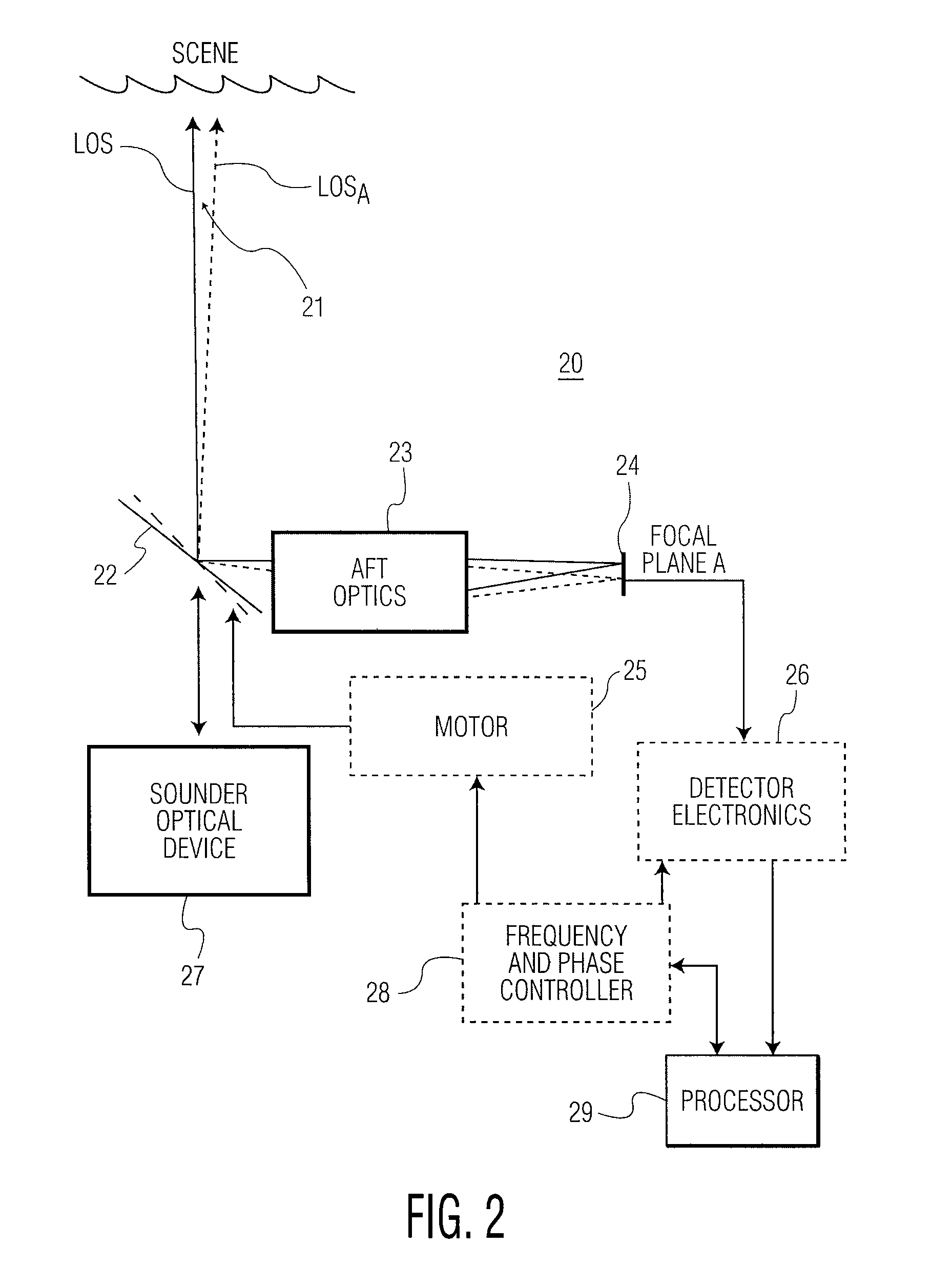Using a fixed-frequency oscillation to detect and measure scene inhomogeneity
- Summary
- Abstract
- Description
- Claims
- Application Information
AI Technical Summary
Benefits of technology
Problems solved by technology
Method used
Image
Examples
Embodiment Construction
[0015]If a small, uniform oscillation is placed on an optical instrument's line-of-sight (LOS), and the instrument is observing a scene which is inhomogeneous at the edges of the field-of-view (FOV), then the output may include an oscillating signal whose amplitude is proportional to the degree of scene inhomogeneity present in the scene. When this oscillation is small or undetectable, then the scene is only slightly inhomogeneous. It is probably cloud-free or covered by the same type of cloud layer. If the opposite is true, then the scene is significantly inhomogeneous, probably having a relatively large fraction of the FOV filled with different types of cloud or other sources of distinct radiances.
[0016]Referring to FIG. 2, sounder optical device 27 receives scene radiance, shown as an optical beam transmitted through mirror 22. The optical beam is transmitted, as shown, by way of a line-of-sight (LOS) to the scene. Mirror 22 is configured to transmit (pass through) any long wavel...
PUM
 Login to view more
Login to view more Abstract
Description
Claims
Application Information
 Login to view more
Login to view more - R&D Engineer
- R&D Manager
- IP Professional
- Industry Leading Data Capabilities
- Powerful AI technology
- Patent DNA Extraction
Browse by: Latest US Patents, China's latest patents, Technical Efficacy Thesaurus, Application Domain, Technology Topic.
© 2024 PatSnap. All rights reserved.Legal|Privacy policy|Modern Slavery Act Transparency Statement|Sitemap



